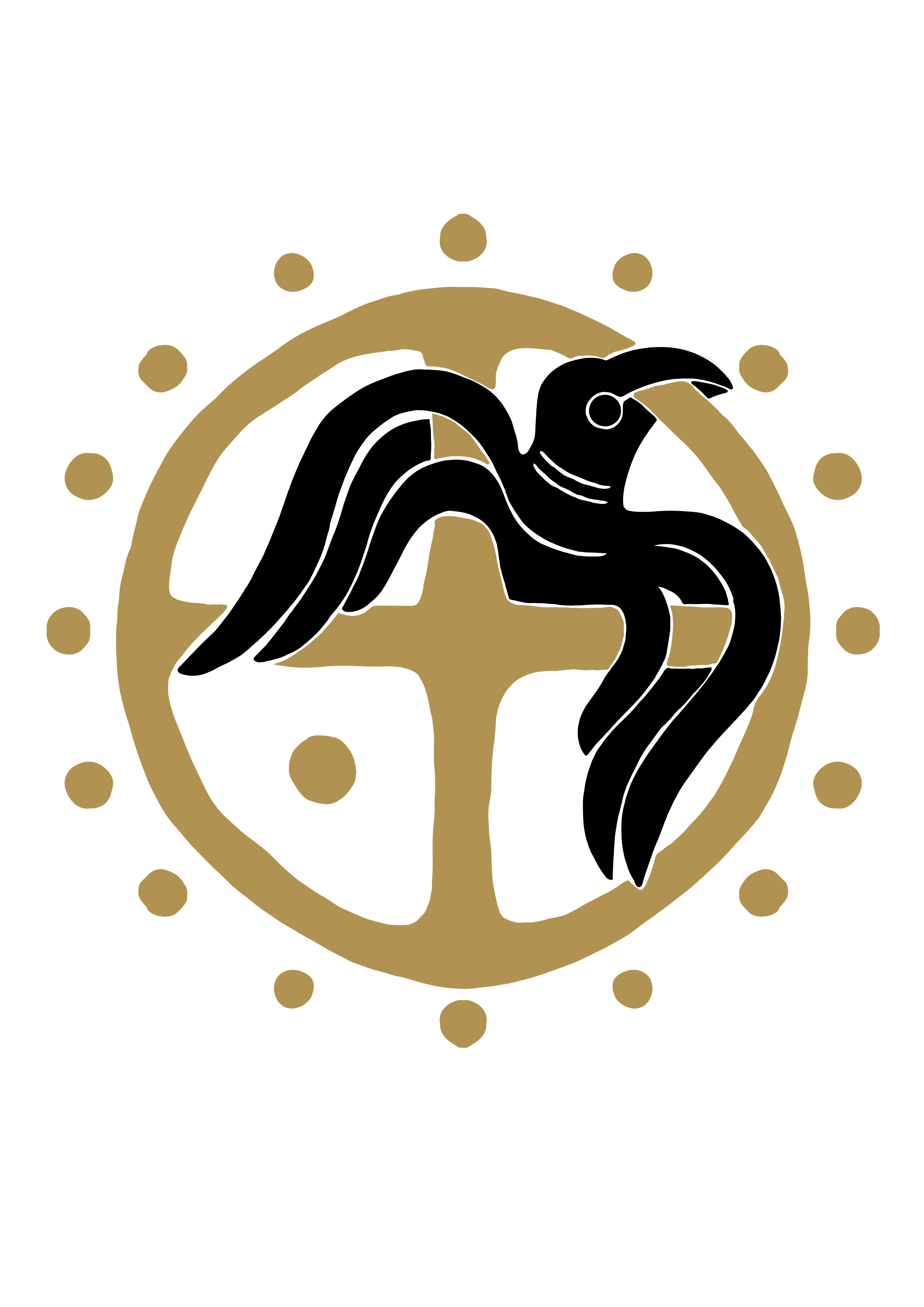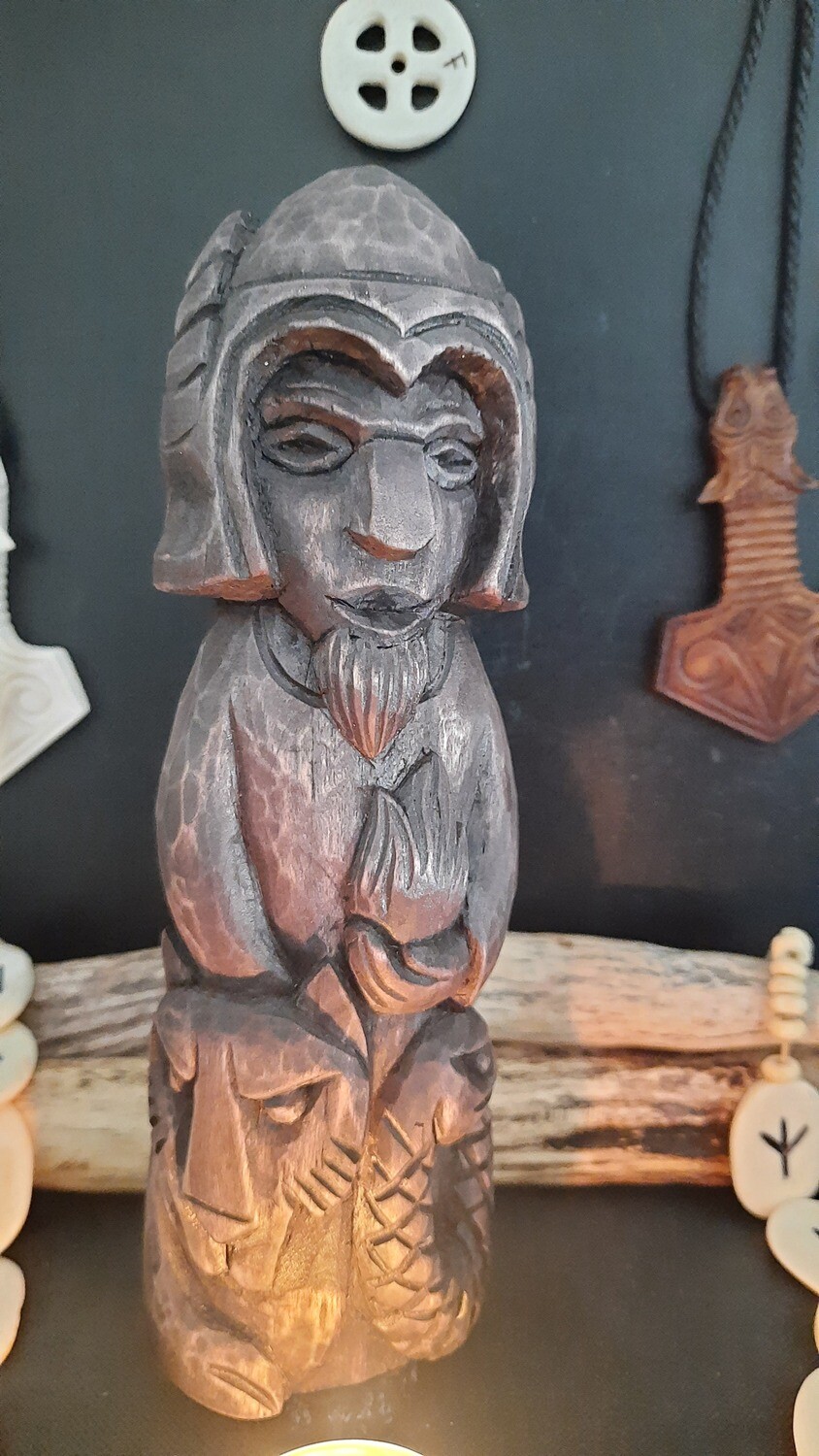Old Norse Gods, Loki Statue, Wood Hand Carved
God Loki Wooden Statue for Norse Pagan Altar
This Loki statue has been hand-crafted with specific details.
Material: linden wood (basswood, lime tree), linseed oil with wax
Size: 18 cm / 7.1 inches
Loki is one of the most fascinating and complex gods in the Germanic pantheon, known for his trickster nature, his shapeshifting abilities, and his association with both chaos and creativity. Although he is often viewed as a villain or a disruptor of the divine order, Loki's role in Norse mythology is essential, as he is involved in many of the most important myths and legends, and his influence is felt throughout the pantheon.
Loki's Position in the Germanic Pantheon
Loki is a member of the Æsir, the tribe of gods who were associated with war, wisdom, and rulership. However, he is not a traditional Æsir himself, but rather a "stray" god who became associated with them through his involvement in various myths and legends. According to some interpretations, Loki is actually an older god who was absorbed into the Æsir pantheon during the migration of the Indo-European peoples.
Despite his outsider status, Loki is a major player in Norse mythology, and his influence is felt in many different aspects of the Germanic pantheon. He is associated with fire, chaos, and transformation, and is often portrayed as a shape-shifter who can take on different forms at will. He is also known for his mischievous nature and his ability to stir up trouble, which often leads to conflict and tension among the other gods.
Loki's Role in Norse Mythology
Loki is involved in many of the most important myths and legends of Norse mythology, often playing a central role in the events that shape the fate of the gods and the world itself. Here are a few examples of some of the most notable myths in which Loki appears:
- The Binding of Fenrir: In this myth, Loki plays a key role in the capture and binding of the monstrous wolf Fenrir, who is prophesied to bring about the end of the world. Loki tricks Fenrir into being bound with a magical chain, but the wolf eventually breaks free and fulfills his fate.
- The Theft of Thor's Hammer: In this myth, Loki steals Thor's powerful hammer, Mjolnir, and causes chaos throughout Asgard. The other gods eventually catch up with him and force him to return the hammer, but not before Loki has caused significant damage.
- The Death of Baldur: In this tragic myth, Loki is responsible for the death of the beloved god Baldur, who is prophesied to die at the hands of a mistletoe branch. Loki creates a spear made of mistletoe and convinces the blind god Hodr to throw it at Baldur, killing him instantly.
- The Treasures of the Gods: In this myth, Loki goes on a series of adventures in which he acquires a number of magical treasures, including Odin's spear, Freyja's necklace, and the golden hair of Sif. These treasures eventually become important plot points in other myths.
Loki's Importance for Asatru Believers
Although Loki is often viewed as a trickster and a villain, he is also an important figure for many Asatru believers. In modern Norse-inspired spiritual practices, Loki is often seen as a symbol of transformation and creativity, and is associated with the idea of challenging the status quo and embracing change.
Many Asatru practitioners believe that Loki's mischievous nature and his willingness to push boundaries can serve as an inspiration for those seeking to break free from oppressive systems or societal norms. Some also see Loki as a protector of outcasts and marginalized groups, due to his own status as an outsider in the pantheon.
#Loki #NorseGods #Asatru #PaganAltar #HandmadeStatue #TricksterGod #Chaos #Transformation #Shapeshifter #Mischievous #Villain #Outsider #Mythology #NorseMythology #NorseInspired #Folklore #NorsePaganism #LokiStatue #NorseArt #Handcrafted #ArtisanMade #EtsyShop #EtsySeller #SmallBusiness #Giftfornorsealtar #handmadeineurope #norseartfrom Europe

